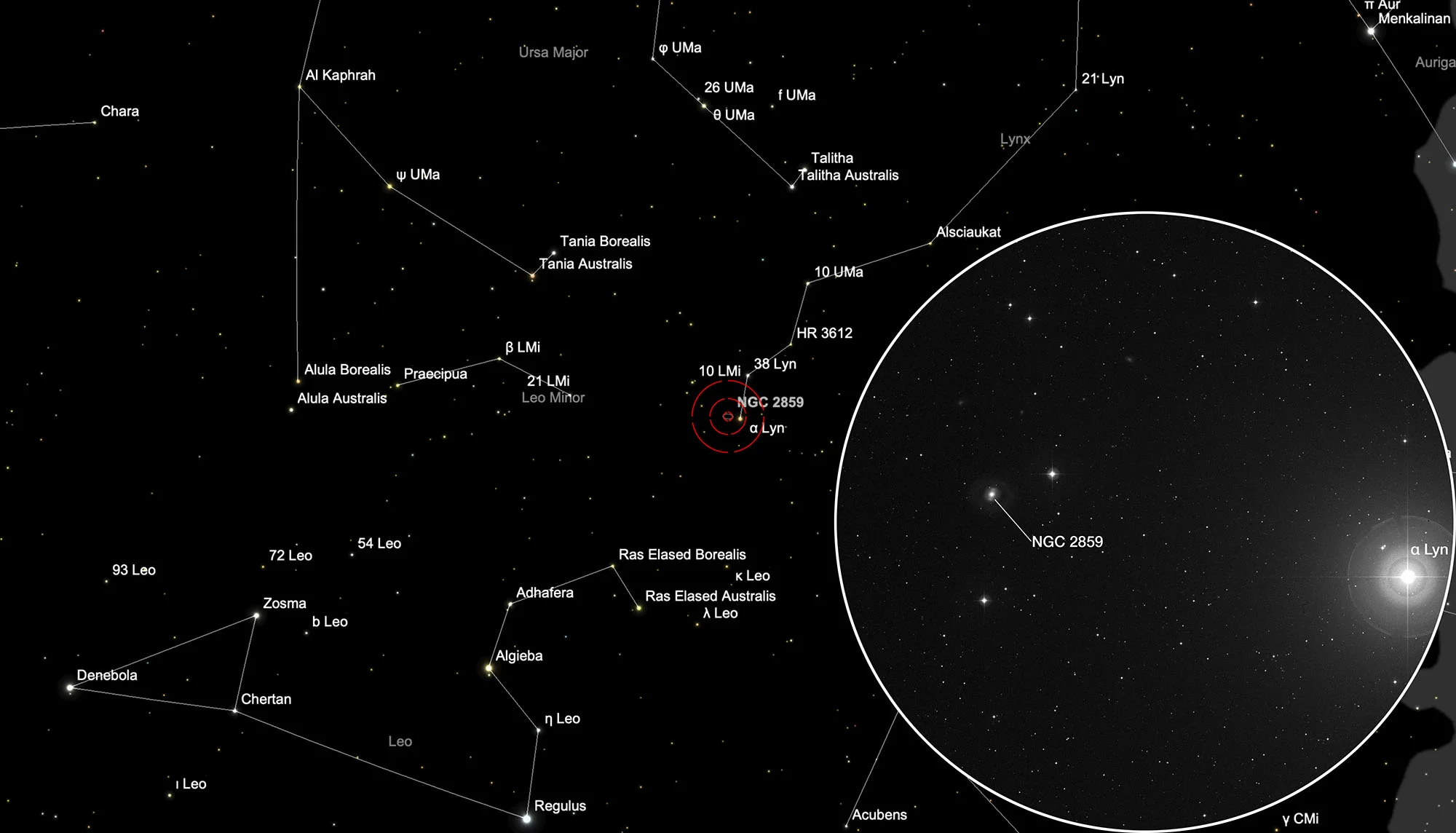Galaxy NGC 2859

History
This galaxy was discovered on 28 March 1786 by the German-British astronomer William Herschel with his self-made 18.7 inch f/12.8 reflecting telescope in Slough, England. He listed it under the designation I 137. He classified his discoveries according to purely visual impressions, where I stands for bright nebulae. The description reads: «Very bright, round, very suddenly much brighter in the middle, chevelure 3' diameter.» [464] Dreyer listed the galaxy as NGC 2859 in 1888. [313]
Physical Properties
The distance of this galaxy is given as 21 to 27 Mpc. [145]
| Designation | NGC 2859 |
| Type | Gx (SB0-a) |
| Right Ascension (J2000.0) | 09h 24m 18.6s |
| Declination (J2000.0) | +34° 30' 48" |
| Diameter | 4.6 × 4.1 arcmin |
| Photographic (blue) magnitude | 11.8 mag |
| Visual magnitude | 10.9 mag |
| Surface brightness | 13.8 mag·arcmin-2 |
| Position Angle | 85° |
| Redshift (z) | 0.005627 |
| Distance derived from z | 23.77 Mpc |
| Metric Distance | 25.400 Mpc |
| Dreyer Description | vB, pL, R, smbM |
| Identification, Remarks | WH I 137; h 593; GC 1837; UGC 5001; MCG 6-21-30; CGCG 181-40 |
Finder Chart
The galaxy NGC 2859 is located in the constellation Leo Minor. The best viewing time is October to July.
